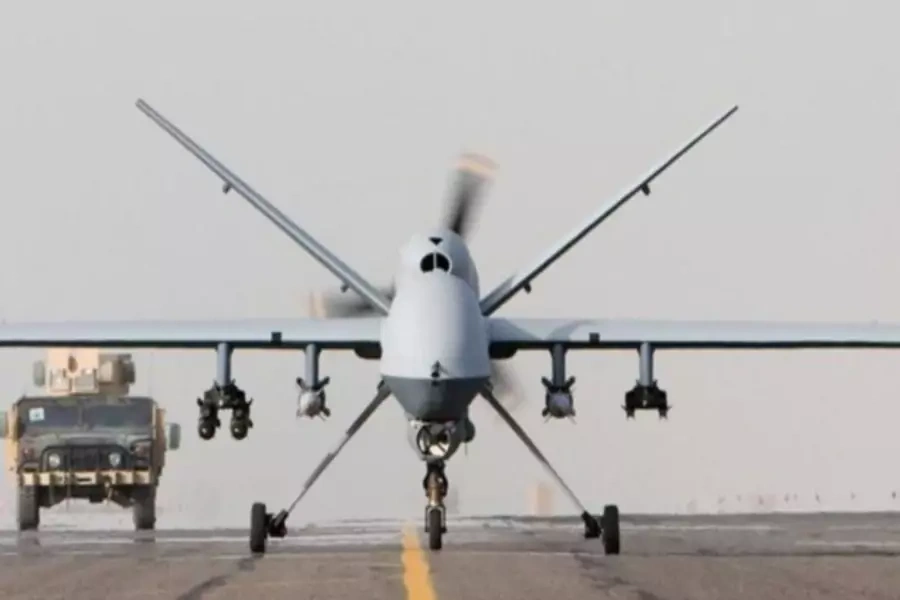You Might Have Missed: Drones, Targeted Killings, and Autonomous Robots

More on:
Maria Abi-Habib, “Troops Shot After Taliban Leader’s Call,” Wall Street Journal, October 26, 2012.
Anti-American feelings are rife in the Afghan army and police, the two forces that are supposed to take over once the coalition’s military mandate ends in 2014. "We call the Americans troops infidels. They may be our allies in military terms, but under our religion they are our enemies," said an Afghan army sergeant serving in Khost province. "The Quran says that Christians and Jews can never be friends of the Muslims."
Colum Lynch, “UN to Probe Drone Attacks by United States, Others Resulting in Civilian Deaths,” Washington Post, October 25, 2012.
Emmerson said that his decision to investigate drone attacks and other targeted killings reflects frustration with the Obama administration’s unwillingness to provide public information on such covert strikes. “The Obama administration continues to formally adopt the position that it will neither confirm nor deny the existence of the drone program…In reality, the administration is holding its finger in the dam of public accountability,” he said according to a prepared copy of the speech.
“I will be launching an investigation unit within the special procedures of the [UN] Human Rights Council to inquire into individual drone attacks, and other forms of targeted killings conducted in counterterrorism operations, in which it has been alleged that civilian casualties have been inflicted,” he added.
(3PA: Earlier that week at the UN, Harold Koh responded to questions: “‘The point is, all killing is regrettable [but] not all killing is illegal.’ He said that killings by drone ‘in the course of armed conflict or in self defense is consistent with international law.’” It would be unprecedented for such an investigation into U.S. targeted killings. The first such inquiry was released on January 13, 2003 (see E/CN.4/2003/3, page 16).)
Peter W. Singer, “Tell Us the One About the Robots, Mr. President,” Foreign Policy, October 24, 2012.
Robotics is akin to gunpowder, the steam engine, or the computer. It’s a game-changing technology not merely because of its power, but because of its impact both on and off the battlefield. While modern unmanned systems are still in the first generation of use—the Model T Ford stage, so to speak—operators for these systems are already the fastest-growing group in the U.S. Air Force, potentially reshaping its long-term identity as more and more pilots never leave the ground.
Government Accountability Office, “Future Aerostat and Airship Investment Decisions Drive Oversight and Coordinations Needs,” October 23, 2012.
Victoria Nuland, Department of State Daily Press Briefing, October 19, 2012.
QUESTION: You talk about intelligence issues when you want to talk about them and when it’s in your interest to do so.
NULAND: That’s fair.
Jeffrey S. Thurner, “No One at the Controls: Legal Implications of Fully Autonomous Targeting,” National Defense University, October 2012.
The United States will likely face asymmetric threats in military campaigns of the future. Whether the threat is the substantial jamming and cyber-attack capabilities of the People’s Republic of China or the legions of swarming Iranian patrol boats, LARs [lethal autonomous robots] may provide the best way to counter it. LARs have the unique potential to operate at a tempo faster than humans can possibly achieve and to lethally strike even when communications links have been severed. Autonomous targeting technology will likely proliferate to nations and groups around the world. To prevent being surpassed by rivals, the United States should fully commit itself to harnessing the potential of fully autonomous targeting. The feared legal concerns do not appear to be an impediment to the development or deployment of LARs. Thus, operational commanders should take the lead in making this emerging technology a true force multiplier for the joint force. Operational commanders who establish appropriate control measures over these unmanned systems will ensure their LARs are effective, safe, and legal weapons on the battlefield.
“Who’s Counting Casualties?” Oxford Research Group, October 2012.
- Greg Miller, “Plan for Hunting Terrorists Signals U.S. Intends to Keep Adding Names to Kill Lists,” Washington Post, October 23, 2012.
- Karen DeYoung, “A CIA Veteran Transforms U.S. Counterterrorism Policy,” Washington Post, October 24, 2012. (3PA: For my thoughts on John Brennan’s role in shaping U.S. targeted killing policies, see here and here.)
- Craig Whitlock, “Remote U.S. Base at Core of Secret Operations,” Washington Post, October 25, 2012.
More on:
 Online Store
Online Store